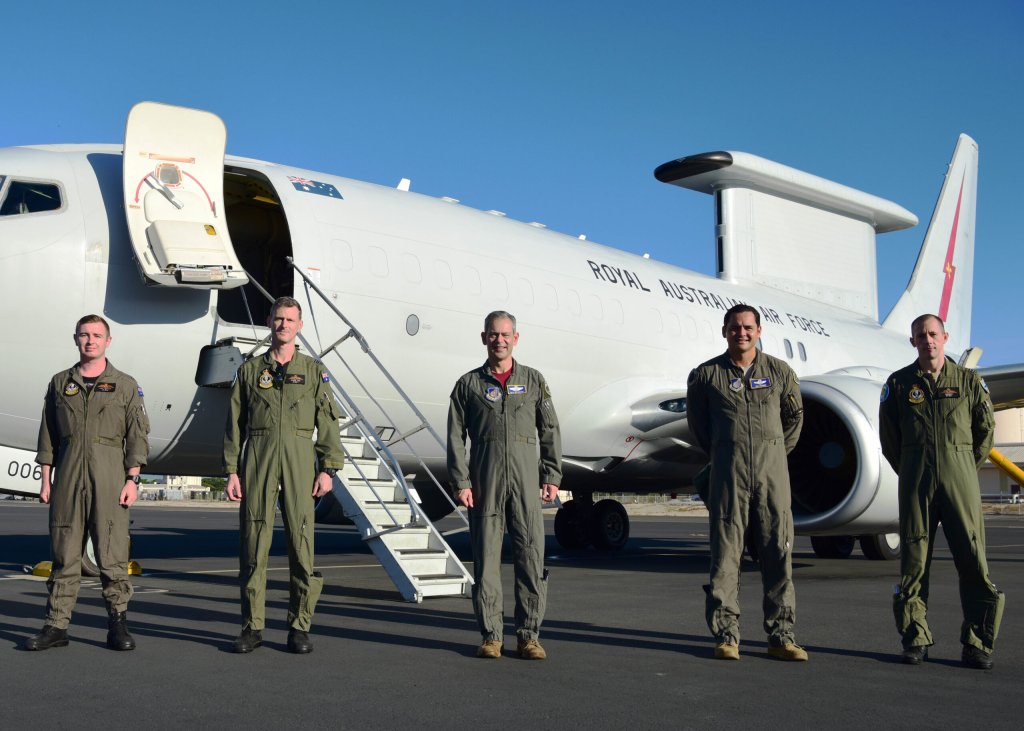

The U.S. Air Force is beginning to replace its aging fleet of E-3A Sentry AWACS aircraft that revolutionized air-to-air combat in the late 20th century. The E-3A has been in service since 1977. Like the similarly aging Air Force KC-135 aerial refueling tanker, it is based on the Boeing 707 commercial airliner, along with several other specialized aircraft, such as the RC-135 reconnaissance version.
The E-7 Wedgetail is also based on a commercial airframe, the proven Boeing 737, currently used by the Navy’s P-8 Poseidon and C-40 cargo aircraft as well, simplifying logistics and yielding cost efficiencies. The Wedgetail is already in use with the Royal Australian, Turkish, and Republic of Korea Air Forces, so the U.S., and also British Royal Air Force are replacing their aging E-3 aircraft with basically a Commercial, Off-the-Shelf (COTS) aircraft.
It is widely believed that the relatively-speedy COTS procurement of the E-7, which will begin entering into U.S. service in 2027, is an indication the AWACS mission will be migrating to space-based systems during the aircraft’s lifecycle. Overall, 26 aircraft are scheduled to be delivered by 2032.
The new E-7 utilizes the latest in electronic warfare and surveillance technology. Instead of the distinctive “frisbee” shaped rotating radar antenna of the E-3A, the Wedgetail uses a linear antenna mounted on a pylon along the “spine” of the aircraft, in line with the fuselage. This reduces drag and adds to the aerodynamic and thus fuel efficiency of the aircraft. Fewer crew members will be needed to operate the Wedgetail, with the new aircraft having two flight crew and six to ten mission crew members, as opposed to four flight crew members for the E-3A Sentry with up to 17 mission crew positions.
There is the potential for more E-7 customers, with the North Atlantic Treaty Organization (NATO) currently operating 14 E-3A Sentry AWACS with multinational crews out of Gelsenkirchen, Germany, and the Persian Gulf State of Qatar having 3 E-3As.
The first of 13 U.S. Air Force E-3As to be retired this year took off for the Department of Defense’s aircraft “boneyard” at Davis-Monthan Air Force Base in Arizona in early April 2023. The Air Force is also rapidly retiring its fleet of 16 E-8 Joint Surveillance Target Attack Radar System (JSTARS) aircraft, which shares the venerable Boeing 707 airframe.

The concept of airborne warning and control has been around since the initial development of radar. During World War Two, recognizing the immediate need to somehow put a radar antenna where there was no land, the British Royal Air Force mounted rotating radar antennas on twin-engine Vickers Wellington bombers. These aircraft were used to direct fighter intercepts of long-range Luftwaffe Focke Wulf 200 Condor aircraft, used to attack Allied shipping, over the North Sea. Other missions included tracking marauding German Navy fast attack E-boats in the English Channel, and German bombers modified to air launch V-1 pulse jet “buzz bombs” against southern England.
In 1944, the U.S. Navy initiated Project Cadillac to provide an airborne radar capability for carrier aircraft operations at sea. The large TBM Avenger carrier torpedo bomber was modified with a “belly bulge” to accommodate the radar equipment. During the same time, the Army Air Force used the Boeing B-17 airframe to develop a similarly configured airborne radar capability. Both efforts stalled with the end of the war in 1945.
Starting in 1949 and into the 1950s, both the U.S. Navy and Air Force developed a long-range airborne radar aircraft based on the Lockheed L-749 Constellation and L-1049 Super Constellation commercial aircraft. These aircraft fulfilled the mission through the Vietnam War and were replaced in the 1970s by the E-3A Sentry AWACS, however, the U.S. Navy did not receive E-3s, and the Air Force was made responsible for providing that capability theater-wide to all Department of Defense users.
Various versions of the aircraft carrier capable Northrop Grumman E-2 Hawkeye have been keeping a watchful eye over U.S. Navy fleets since the 1960s, with the latest E-2D type projected to remain in service until the 2040s.
Japan operates four Boeing 767-based AWACS aircraft. Currently, the Russian Beriev A-50, NATO reporting name: Mainstay, performs the AWACS mission for the Russian Federation and the Indian Air Force and is based on the Ilyushin Il-76 transport airframe. The Chinese People’s Liberation Army Air Force also operates an IL-76-based AWACS aircraft, the KJ-2000, NATO reporting name: Mainring.
